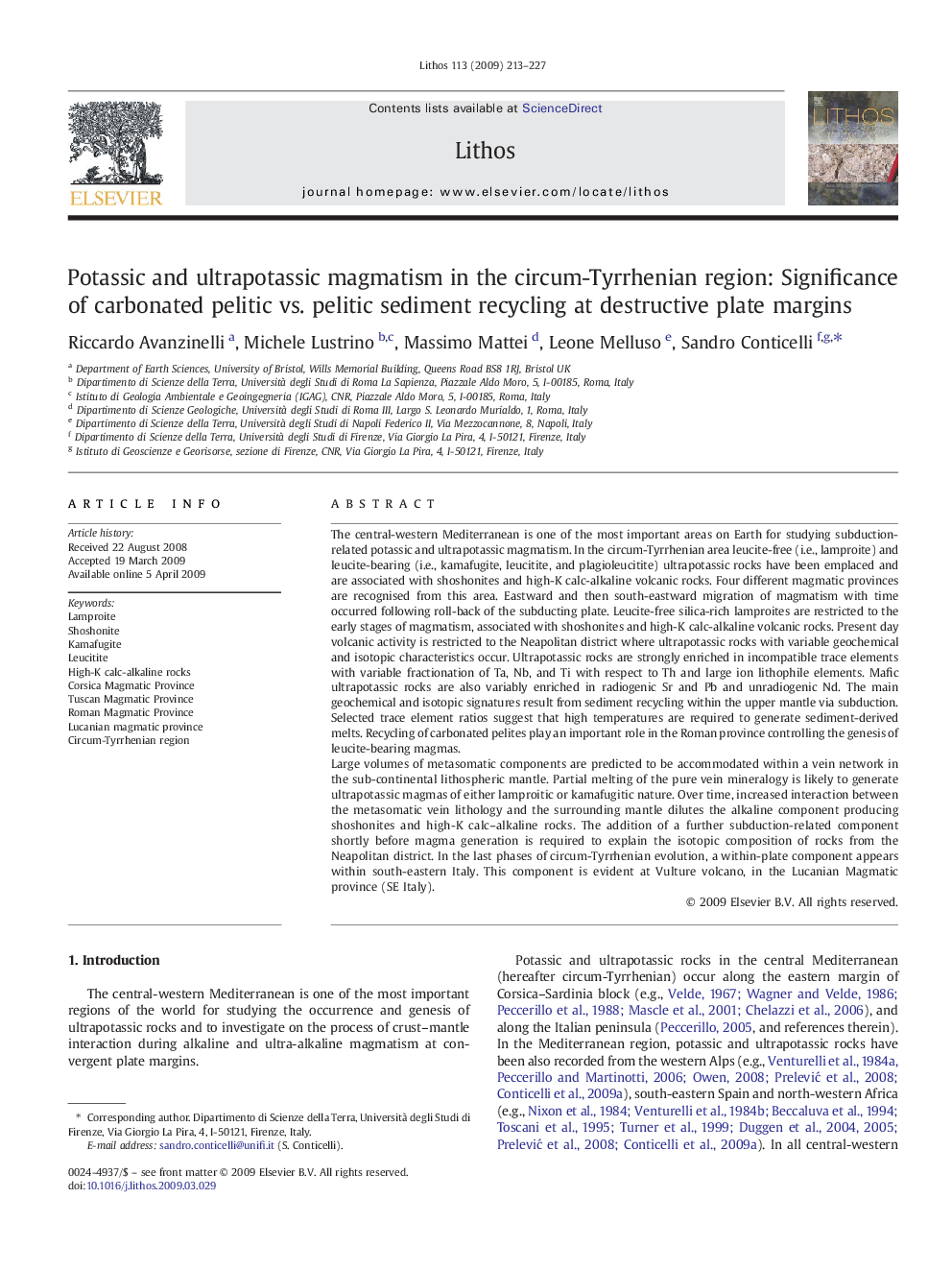| کد مقاله | کد نشریه | سال انتشار | مقاله انگلیسی | نسخه تمام متن |
|---|---|---|---|---|
| 4717013 | 1638739 | 2009 | 15 صفحه PDF | دانلود رایگان |

The central-western Mediterranean is one of the most important areas on Earth for studying subduction-related potassic and ultrapotassic magmatism. In the circum-Tyrrhenian area leucite-free (i.e., lamproite) and leucite-bearing (i.e., kamafugite, leucitite, and plagioleucitite) ultrapotassic rocks have been emplaced and are associated with shoshonites and high-K calc-alkaline volcanic rocks. Four different magmatic provinces are recognised from this area. Eastward and then south-eastward migration of magmatism with time occurred following roll-back of the subducting plate. Leucite-free silica-rich lamproites are restricted to the early stages of magmatism, associated with shoshonites and high-K calc-alkaline volcanic rocks. Present day volcanic activity is restricted to the Neapolitan district where ultrapotassic rocks with variable geochemical and isotopic characteristics occur. Ultrapotassic rocks are strongly enriched in incompatible trace elements with variable fractionation of Ta, Nb, and Ti with respect to Th and large ion lithophile elements. Mafic ultrapotassic rocks are also variably enriched in radiogenic Sr and Pb and unradiogenic Nd. The main geochemical and isotopic signatures result from sediment recycling within the upper mantle via subduction. Selected trace element ratios suggest that high temperatures are required to generate sediment-derived melts. Recycling of carbonated pelites play an important role in the Roman province controlling the genesis of leucite-bearing magmas.Large volumes of metasomatic components are predicted to be accommodated within a vein network in the sub-continental lithospheric mantle. Partial melting of the pure vein mineralogy is likely to generate ultrapotassic magmas of either lamproitic or kamafugitic nature. Over time, increased interaction between the metasomatic vein lithology and the surrounding mantle dilutes the alkaline component producing shoshonites and high-K calc–alkaline rocks. The addition of a further subduction-related component shortly before magma generation is required to explain the isotopic composition of rocks from the Neapolitan district. In the last phases of circum-Tyrrhenian evolution, a within-plate component appears within south-eastern Italy. This component is evident at Vulture volcano, in the Lucanian Magmatic province (SE Italy).
Journal: Lithos - Volume 113, Issues 1–2, November 2009, Pages 213–227